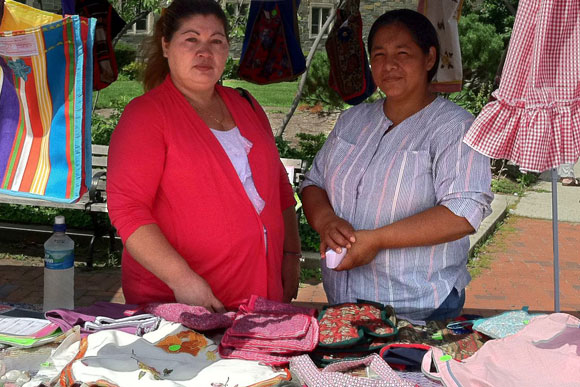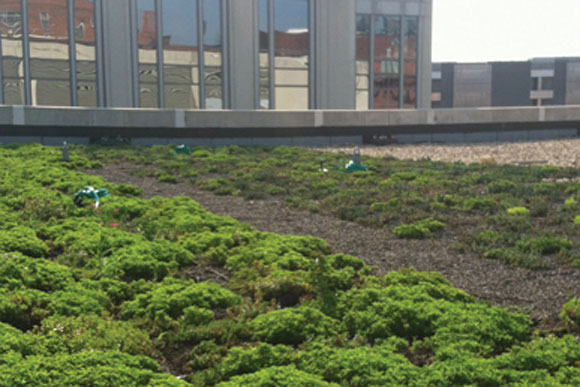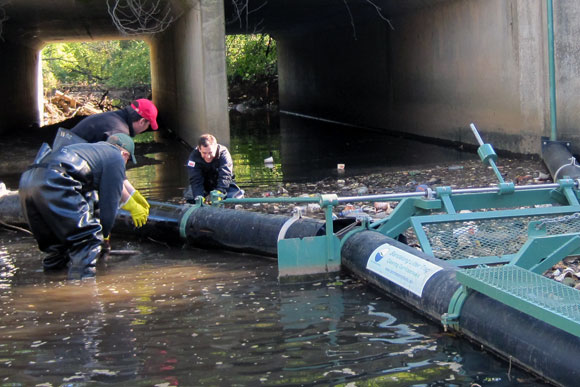D.C. became one of the first municipalities in the nation to charge for plastic bags at grocery stores and other stores that sell food after it passed the Anacostia River Clean Up and Protection Act of 2009.
Now, heading into the third year of the program, the results are tangible: District residents are using fewer disposable bags than prior to the law, and those who still choose to pay for bags at the grocery store have collectively contributed $5.8 million to river cleanup activities.
That is far less than the District estimated the fees would bring in. "Initial projections were that we would raise about $4 million a year," says District Department of the Environment (DDOE) spokesperson Kate Judson. "That means the law is working. The goal is to get bags out of the river, not to raise revenue."
Yet $5.8 million is not something to sneeze at, either. The money funds cleanup efforts, public opinion polls, and stormwater runoff prevention (the latter important because when D.C.'s combined sewer system floods, sewage goes straight into the river, to the tune of two billion gallons of untreated sewage mixed with rainwater each year).
Elevation spoke to four of the many organizations that have been funded or otherwise affected by the law.
El Rosal Sewing Collective: Seizing a business opportunity
By Luis Velarde
When Montgomery County duplicated Washington's 5-cent plastic bag fee to encourage residents to use reusable bags, the El Rosal sewing co-op noticed an opportunity.
The measure – intended to increase funding for water quality protection programs and curb pollution in one of Maryland's most populated areas -- opened an unexpected job prospect for unemployed mothers.
 Back then, the country's unemployment rate was above 8 percent. Latina women in Silver Spring felt the need to bring in extra money.
Back then, the country's unemployment rate was above 8 percent. Latina women in Silver Spring felt the need to bring in extra money.
Enter Edelsa Barrios. She learned that a group of women was interested in getting together to support one another, so she offered to teach sewing.
El Rosal was born. IMPACT Silver Spring, a Maryland nonprofit, donated sewing machines, and Takoma Foundation helped with three $2,000 grants.
"'We can do this, support each other in the process, and maybe bring some resources in to our families,'" Elizabeth McMeekin, Senior Network Manager at IMPACT, recalls hearing them say.
In 2012, Maryland State Senator Jamie Raskin ordered 250 reusable bags for his re-election campaign.
"Senator Raskin helped us get noted," says Karla Mejia, one of the members of El Rosal. "But most of the time, people who know our work go to our workshop and buy them directly."
The group has added to its sewing list dresses, blouses and aprons. El Rosal incorporates designs from Guatemala, Honduras and El Salvador to their sewing, and this year, their goal is to expand to Washington by selling at farmer's markets.
"It's a good idea to buy a bag that's going to last," says Karla Mejia, one of the members of El Rosal. "Some people buy them to go grocery shopping, while others used them as an accessories or handbags. It's a good thing to have."
Anacostia Watershed Society: Living roofs have owners — and river advocates — seeing green
By Rachel Kaufman

One of the Anacostia Watershed Society's many eco-friendly programs is a
rebate for D.C. homeowners who install green roofs.
"We've got $5 per square foot to help a homeowner install a green roof on their building," says Mike Lucy, a senior consultant and program manager with AWS.
A green roof extends the life of a building, saves on heating and cooling costs by insulating the building, and may increase property values, Lucy says. That's on top of the primary benefit, which is to reduce stormwater runoff by trapping it among the living plants and soil atop a building's roof.
Over the past two years, AWS has funded 122,000 square feet of green roofs on 17 properties. Of those, the bag fee has paid for 62,000 square feet, or 12 roofs. (AWS's bag fee money also helps maintain litter traps in the Anacostia river and and pays for assessments of how well the fee itself is working. A new assessment will come out in early summer.)
According to a calculator provided by the American Rivers association, that saved owners approximately $55,000 on heating/cooling costs and prevented 1.2 million gallons of stormwater from pouring into D.C.'s sewers.
Groundwork DC: Litter traps make a cleaner river and useful advocacy tool
By Kaitlynn Hendricks
 Litter measuring traps in the Anacostia River, funded by D.C.'s bag bill, are concretely demonstrating the bill's success. The traps show significantly fewer plastic bags now end up in the river.
Litter measuring traps in the Anacostia River, funded by D.C.'s bag bill, are concretely demonstrating the bill's success. The traps show significantly fewer plastic bags now end up in the river.
Groundwork DC director Dennis Chestnut and his team, whom he's training as "watershed protection specialists" with bag tax funding, maintain the traps and keep data on trash captured. Groundwork's data collection can aid advocacy and shape public policy, which Chestnut hopes will help to bring about more positive environmental changes.
Wildlife in the surprisingly vibrant environment also benefit. The river is freer of obstructive and potentially harmful debris.
The floating design allows fish, turtles, frogs, beavers and aquatic birds often seen in the river to navigate around the traps easily, without being injured or hindered.
One trap at Marvin Gaye Park measures trash crossing the Maryland border in the Watts Branch Tributary. A trap at Kenilworth Park further downstream similarly measures the impact of trash in D.C.'s very urban setting. A third trap at James Creek Marina measures trash in storm runoff.
Plastic bottles and Styrofoam are now the most commonly recorded litter in the traps. 7-Eleven currently outpaces McDonalds as the single most common vendor trash source found, but only, according to Chestnut, because most of McDonald's materials are biodegradable.
Mike Bolinder, director of Anacostia Riverkeeper, says, "We can see a cause and effect relationship between policy changes and the trash that's in the water. It gives us a measurement that we can point to. The bag fee dramatically changed the amount of bags in the river. We almost never see plastic bags in the traps."
Casey Trees: From the roots to the sky
By Rachel Kaufman
 Casey Trees
Casey Trees had already been working with the
District Department of the Environment (DDOE) to
convince homeowners to plant trees that reduce storm water runoff. The bag fee just added a new funding stream.
"We've been grateful for it," says Jared Powell, Casey Trees' director of communications and development.
The program -- wherein a homeowner gets a shade tree planted in his or her yard for just a $50 copay -- is so popular that there's a waiting list until the fall, Powell says.
Bag fees from DDOE have paid for 25 percent, or 1,380 trees, planted through the RiverSmart Homes program, says Powell.
Trees have to come from a list selected by Casey Trees for their environmental benefits, primarily storm water runoff prevention. "The canopy helps mitigate the storm water, because it captures the water," trapping droplets among a tree's leaves, says Powell. And a thirsty tree's roots suck up more water, preventing that water from flooding sewers.
But tree-huggers who plunk down an oak, a sycamore, or other sapling in their yard get more than a warm feeling: a tree provides shade, privacy, and habitat for birds and other wildlife. Not to mention a place to string up your hammock on summer days and watch the clouds go by.